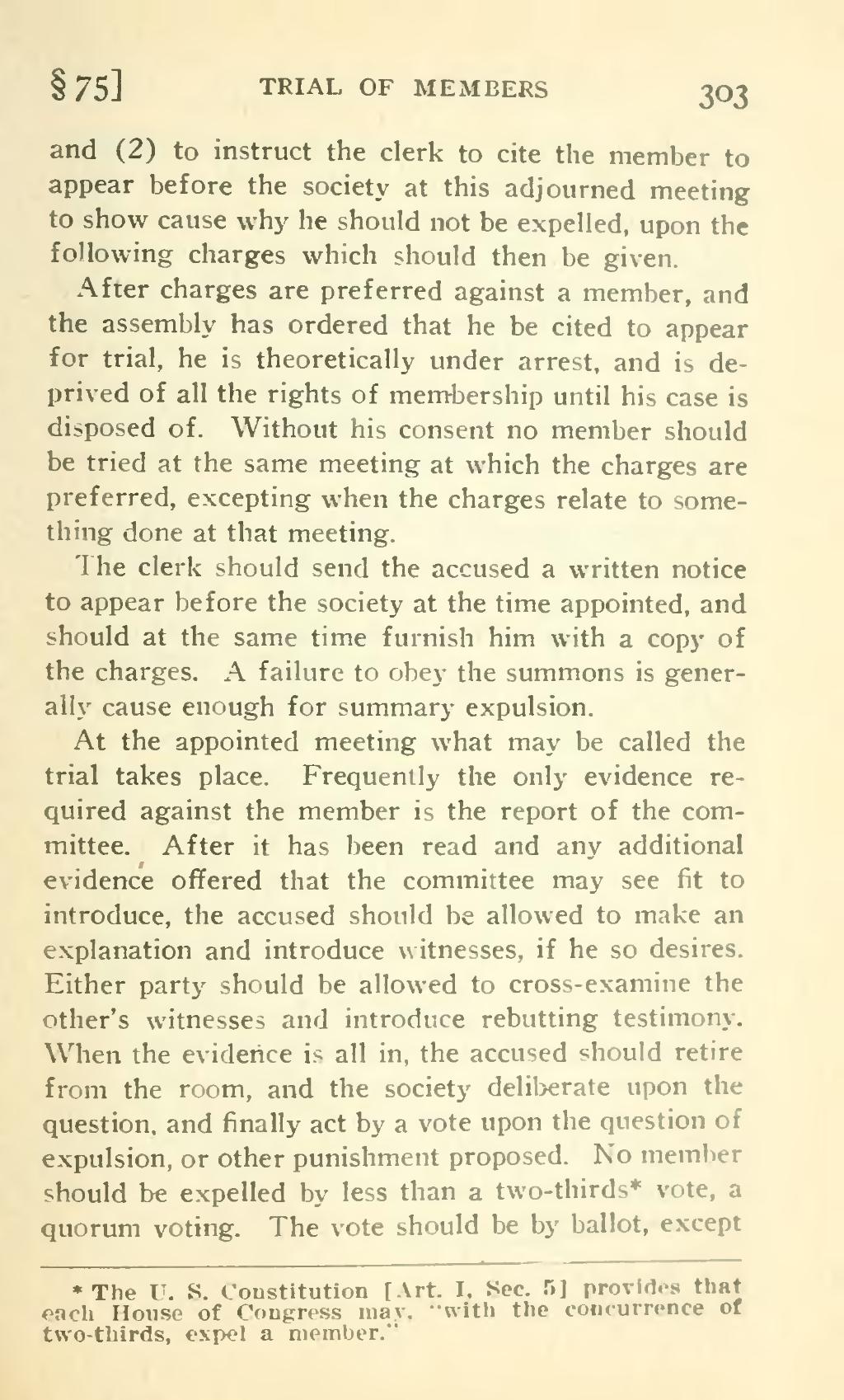and (2) to instruct the clerk to cite the member to appear before the society at this adjourned meeting to show cause why he should not be expelled, upon the following charges which should then be given.
After charges are preferred against a member, and the assembly has ordered that he be cited to appear for trial, he is theoretically under arrest, and is deprived of all the rights of membership until his case is disposed of. Without his consent no member should be tried at the same meeting at which the charges are preferred, excepting when the charges relate to something done at that meeting.
The clerk should send the accused a written notice to appear before the society at the time appointed, and should at the same time furnish him with a copy of the charges, A failure to obey the summons is generally cause enough for summary expulsion.
At the appointed meeting what may be called the trial takes place. Frequently the only evidence required against the member is the report of the committee. After it has been read and any additional evidence offered that the committee may see fit to introduce, the accused should be allowed to make an explanation and introduce witnesses, if he so desires. Either party should be allowed to cross-examine the other's witnesses and introduce rebutting testimony. When the evidence is all in, the accused should retire from the room, and the society deliberate upon the question, and finally act by a vote upon the question of expulsion, or other punishment proposed. No member should be expelled by less than a two-thirds*[1] vote, a quorum voting. The vote should be by ballot, except
- ↑ * The U. S. Constitution [Art. I. Sec. 5] provides that each House of Congress may, "with the concurrence of two-thirds, expel a member."
